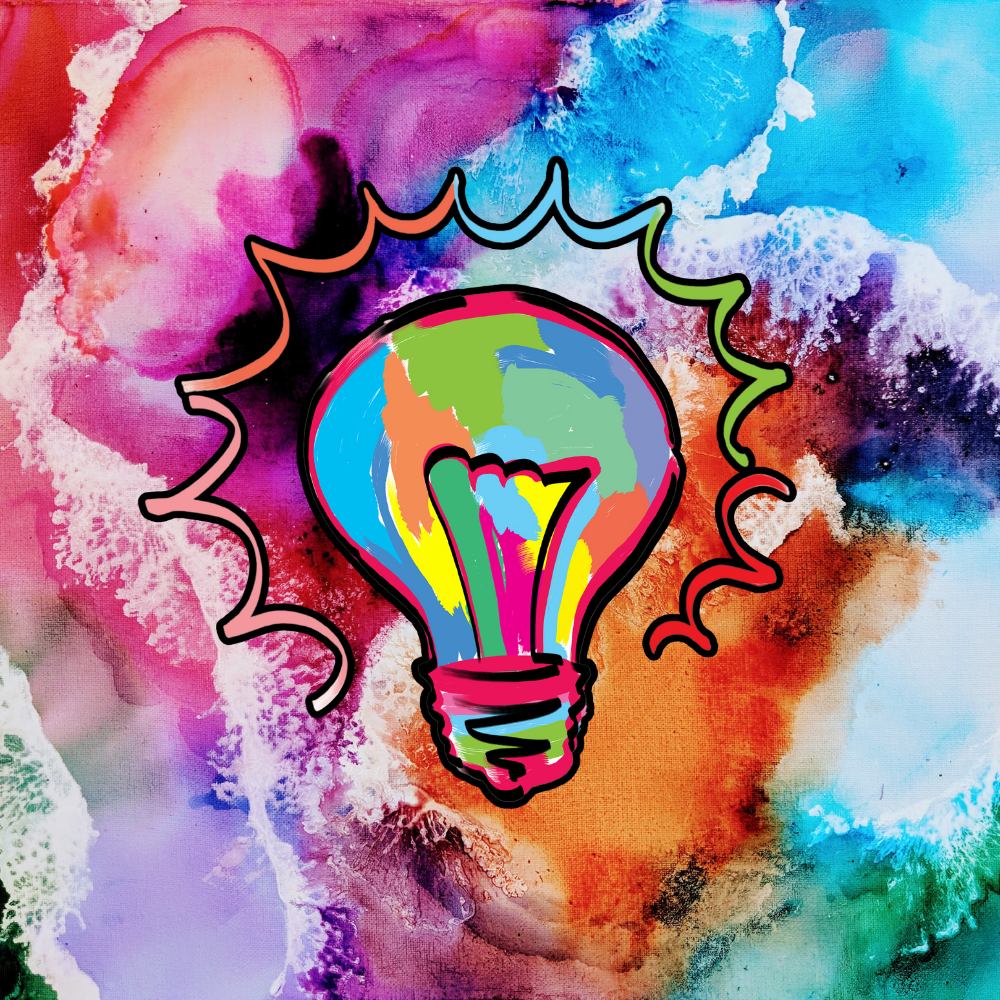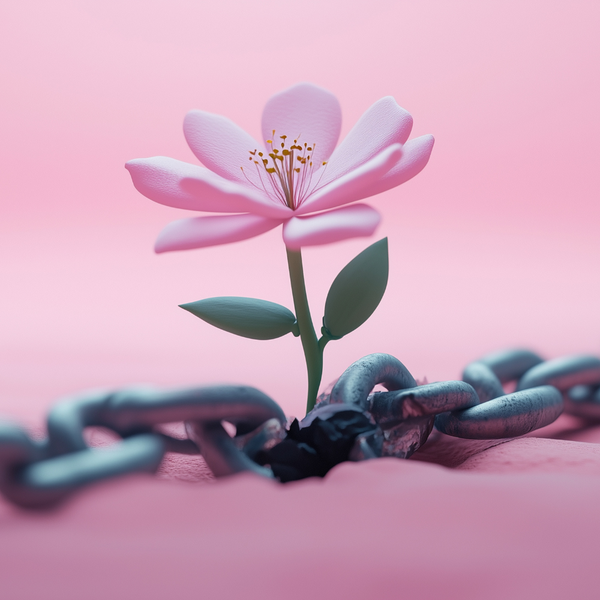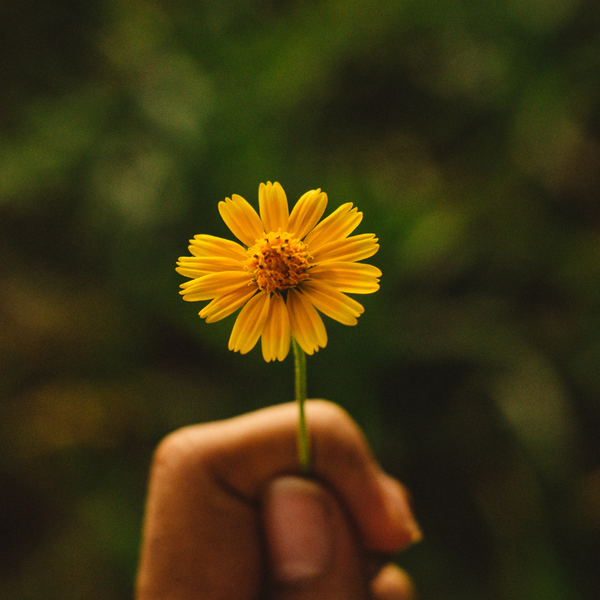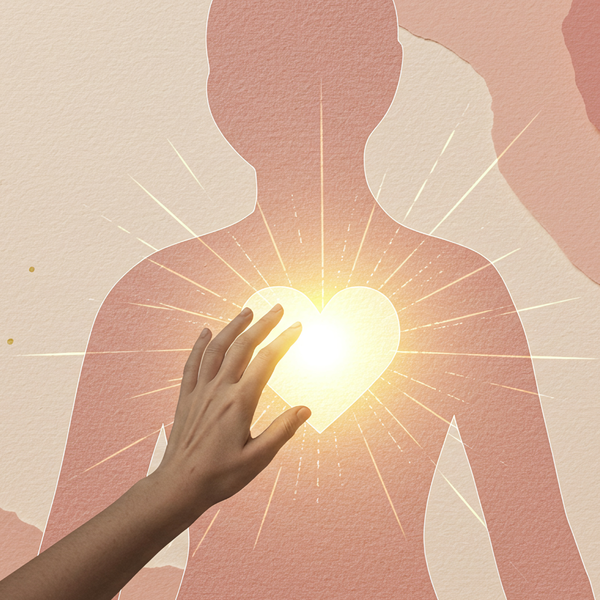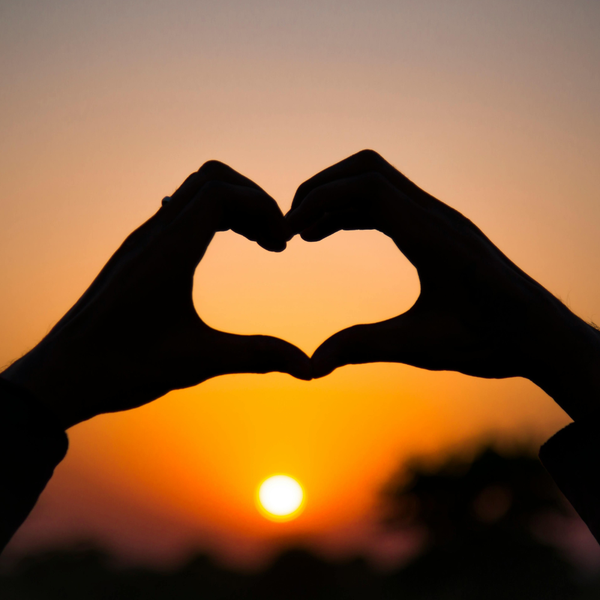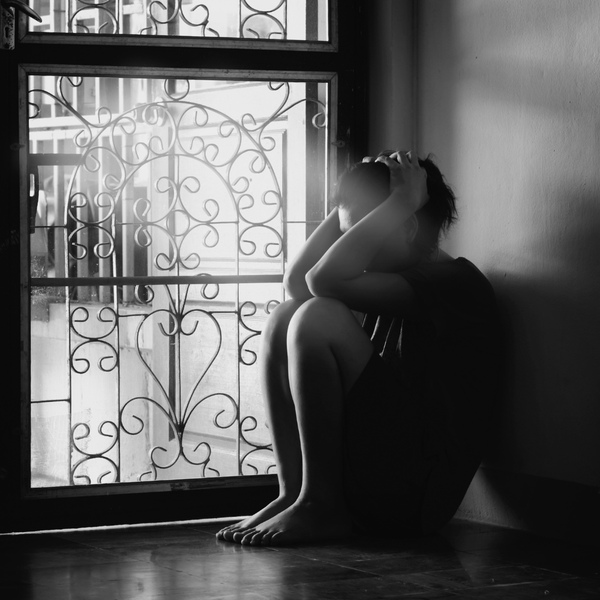Creativity is the secret sauce that flavors every aspect of our lives. It's not just about painting masterpieces or composing symphonies; it's about finding innovative solutions, expressing emotions, and seeing the world through a unique lens. Whether you're an artist, a scientist, or someone navigating the challenges of everyday life, creativity is your superpower.
In this exploration of creativity, we delve into its many forms and discover how it shapes our world. From artistic expression to scientific innovation, creativity is the driving force behind progress and transformation. Let's embark on a journey to uncover the magic of creativity and learn how to harness its potential in our own lives.
The word "creativity" often conjures images of artists with paintbrushes, musicians with instruments, or writers with pens poised over paper. Yet, creativity is a vast, boundless concept that transcends traditional artistic endeavors. It is a fundamental human trait that manifests in countless forms, from the way we solve problems to how we express emotions or innovate in technology.
Creativity is not confined to a select few; it is an innate ability that everyone possesses. It is the spark that fuels innovation, the force that drives progress, and the magic that transforms the mundane into the extraordinary. But what exactly is creativity, and how can we tap into its potential?
Exploring the Types of Creativity: The Essence
At its core, creativity is the ability to generate new ideas, solutions, or expressions that are both original and valuable. It involves thinking outside the box, challenging the status quo, and embracing the unknown. Creativity is not limited to the arts; it permeates every aspect of life, from science and technology to business and education.
Creativity is a dynamic process that involves imagination, experimentation, and risk-taking. It requires an open mind, a willingness to explore uncharted territories, and the courage to make mistakes. Creativity is not about perfection; it is about exploration and discovery. It’s about seeing the world not as it is, but as it could be, and having the audacity to bring that vision to life.
Cognitive creativity involves systematic exploration and analytical thinking for refining ideas, as well as the instinctive generation of solutions through rapid cognitive processes and intuitive thinking. Deliberate cognitive creativity emphasizes systematic exploration, analytical thinking, and refinement of concepts through planning, while spontaneous cognitive creativity focuses on quick, instinctive generation of ideas through logical thinking and problem-solving skills.
What is Creativity?
Creativity is the remarkable ability to form novel and valuable ideas or works using one’s imagination. It transcends the boundaries of artistic expression, finding its place in problem-solving, innovation, and everyday life. At its essence, creativity involves the use of imagination or original ideas, especially in the production of an artistic work. However, it is not confined to the arts alone.
Creativity is a complex cognitive process that enables individuals to generate new ideas, think outside the box, and discover novel solutions to problems. Whether it’s devising a groundbreaking scientific theory or finding a clever way to organize your workspace, creativity is the spark that ignites innovation and progress.
Who Can Engage in Creative Thinking?
The beauty of creativity is that it is not exclusive to a select few; it is a universal trait that everyone possesses. While some people may have a natural inclination towards creative pursuits, creativity can be nurtured and developed in anyone. It is a skill that can be honed through practice, exploration, and a willingness to embrace new experiences. Creative thinkers leverage extensive knowledge and innovative thinking to produce new ideas, making it essential to provide them with opportunities for research and the time necessary to develop their solutions effectively.
Creativity is not limited by age, gender, or background. It is a diverse and inclusive trait that thrives in environments that encourage curiosity, collaboration, and open-mindedness. By fostering a culture of creativity, we can unlock the potential within ourselves and others.
The Many Faces of Creativity
Creativity is a kaleidoscope of possibilities, manifesting in myriad forms across different aspects of life. It is the heartbeat of innovation, the soul of artistic endeavors, and the secret ingredient in everyday problem-solving.
As we delve into the many faces of creativity, we uncover its profound impact on art, science, business, and daily life. Whether through the brushstrokes of a painter, the strategic mind of an entrepreneur, or the curious spirit of a scientist, creativity is the common thread that weaves through the fabric of human experience, enriching our world in countless ways. Emotional creativity, encompassing both spontaneous and deliberate forms, intertwines emotions with creative expression. Spontaneous emotional creativity is driven by immediate emotional experiences, while deliberate emotional creativity involves a methodical understanding of emotions to resonate with audiences.
Problem Solving
Creativity is essential for effective problem-solving. It involves looking at problems from different angles, identifying patterns, and developing innovative solutions. Cognitive processes play a crucial role in spontaneous and cognitive creativity, emphasizing quick thinking and lateral connections. Whether it’s finding a way to reduce waste in a manufacturing process or developing a new marketing strategy, creativity is key to overcoming challenges.
Problem-solving creativity is about adaptability and resilience. It’s about finding new ways to navigate obstacles and turning challenges into opportunities. It requires a mindset that is open to change and willing to embrace uncertainty.
Entrepreneurship
Entrepreneurs are often seen as the epitome of creativity. They identify opportunities, take risks, and create new products or services that meet the needs of consumers. Entrepreneurship requires a combination of creativity, vision, and determination to succeed in a competitive market.
Entrepreneurial creativity is about innovation and disruption. It’s about challenging the status quo and creating value in new and unexpected ways. Entrepreneurs are visionaries who see possibilities where others see limitations, and they have the courage to turn their ideas into reality.
Scientific Innovation
Creativity is the driving force behind scientific discovery and innovation. Scientists use creative thinking to formulate hypotheses, design experiments, and develop new technologies. From the invention of the wheel to the exploration of space, creativity has been at the heart of scientific progress.
Scientific creativity involves a unique blend of logic and imagination. It requires the ability to see connections between seemingly unrelated concepts and to envision possibilities that others might overlook. Cognitive creativity refers to both deliberate creativity, which involves a systematic approach to generating solutions based on established knowledge and goals, and spontaneous creativity, which emphasizes quick and innovative idea generation through logical thinking and intuition. It’s about pushing the boundaries of what is known and daring to venture into the unknown.
Everyday Creativity
Creativity is not limited to grand endeavors; it is present in everyday life. From cooking a meal with limited ingredients to finding a shortcut on your daily commute, creativity is the ability to adapt and innovate in any situation. It is the small, creative acts that make life more enjoyable and fulfilling.
Everyday creativity is about resourcefulness and ingenuity. It’s about finding joy in the ordinary and making the most of what you have. It’s the little things, like crafting a heartfelt gift or coming up with a clever solution to a household problem, that add color and vibrancy to our lives. Creativity can also operate outside of conscious awareness, as the brain continues to work on problems subconsciously while engaging in unrelated activities.
Artistic Expression
Artistic creativity is perhaps the most recognized form of creativity. It encompasses a wide range of disciplines, including painting, sculpture, music, dance, theater, and literature. Artists use their creativity to convey emotions, tell stories, and provoke thought. Through their work, they offer new perspectives and challenge societal norms.
Artistic expression is a powerful tool for communication. It transcends language barriers and cultural differences, allowing people to connect on a deeper, emotional level. Whether it’s a painting that captures the beauty of a sunset or a song that speaks to the heart, art has the power to inspire, heal, and transform.
Visual Arts
Visual arts encompass a wide range of creative disciplines, including painting, sculpture, photography, and digital art. Artists use their creativity to capture the beauty of the world, convey emotions, and challenge perceptions. Visual arts offer a tangible form of expression, allowing individuals to share their unique perspectives with the world.
They encourage mindfulness and observation, helping individuals appreciate the beauty in everyday life. Visual arts provide a platform for self-expression, allowing artists to communicate ideas and emotions visually. The tactile nature of visual arts offers a sensory experience, engaging both the creator and the viewer.
Writing
The written word is a powerful medium for creativity, offering a canvas for imagination to run wild. Whether through poetry, novels, or essays, writing allows individuals to craft worlds, convey emotions, and share ideas. It is a form of self-expression that transcends time and space, connecting readers and writers across generations.
Writing serves as a therapeutic outlet, providing a safe space for introspection and self-discovery. It fosters empathy by allowing writers to step into the shoes of diverse characters and perspectives. The versatility of writing means it can be adapted to various formats, from blogs to screenplays, catering to different audiences.
Theater
Theater and drama are dynamic forms of creativity that bring stories to life through performance. Actors, directors, and playwrights collaborate to create immersive experiences that captivate audiences and evoke emotions. Theater is a celebration of human expression, blending dialogue, movement, and visual elements to tell compelling stories.
It fosters collaboration and teamwork, bringing together diverse talents to create a cohesive production. Theater provides a platform for social commentary, challenging audiences to reflect on societal issues. The immediacy of live performance creates a unique connection between actors and audiences, making each show a one-of-a-kind experience.
Music
Music is a universal language that transcends cultural boundaries, offering a rich tapestry for creative expression. From composing melodies to performing on stage, music allows individuals to convey emotions and connect with others on a deep, emotional level. It is an art form that resonates with the soul and has the power to inspire, heal, and unite.
Music enhances cognitive abilities, improving memory, attention, and problem-solving skills. It serves as a powerful tool for emotional expression, allowing individuals to process and communicate complex feelings. The diversity of musical genres ensures there is something for everyone, catering to a wide range of tastes and preferences.
Cooking
Cooking is a creative endeavor that combines flavors, textures, and techniques to create delicious and nourishing meals. It is an art form that engages the senses and brings people together, offering a platform for experimentation and innovation. Whether following a recipe or improvising with ingredients, cooking is a celebration of creativity and culture.
Cooking encourages experimentation and innovation, allowing individuals to explore new flavors and techniques. It fosters a sense of community, bringing people together to share meals and create lasting memories. The act of cooking can be therapeutic, providing a sense of accomplishment and satisfaction.
Gardening
Gardening is a form of creativity that connects individuals with nature, offering a canvas for cultivating beauty and life. It is an art form that requires patience, observation, and a deep appreciation for the natural world. Gardening allows individuals to express their creativity through the design and care of living spaces, creating vibrant and harmonious environments.
Gardening promotes mindfulness and relaxation, providing a peaceful escape from the hustle and bustle of daily life. It fosters a sense of responsibility and stewardship for the environment, encouraging sustainable practices. The act of nurturing plants and watching them grow is a rewarding and fulfilling experience.
Interior Design
Interior design and home decorating are creative expressions that transform living spaces into personal sanctuaries. It involves the thoughtful arrangement of furniture, colors, and accessories to create a harmonious and inviting environment. Interior Design allows individuals to express their personality and style, creating spaces that reflect their unique tastes and preferences.
Home decor enhances well-being by creating spaces that promote comfort and relaxation. It encourages creativity and self-expression, allowing individuals to experiment with different styles and aesthetics. The process of decorating a home can be a collaborative and enjoyable experience, bringing families and friends together.
The Creative Process
The creative process is a fascinating journey that unfolds in a series of stages, guiding individuals from the inception of an idea to its realization. This process is essential for generating new ideas and solving problems effectively. Here are the key stages of the creative process:
- Incubation: This initial stage involves being exposed to a problem or challenge that requires a creative solution. During this phase, the mind begins to absorb information and explore possibilities, often subconsciously.
- Illumination: In this stage, the person starts to generate ideas and think of possible solutions. It’s the moment of insight when a new idea or solution suddenly becomes clear, often described as the “aha” moment.
- Verification: Here, the person evaluates and refines their ideas, selecting the best solution. This stage involves critical thinking and analysis to ensure the idea is viable and effective.
- Implementation: The final stage is where the creative solution is put into action. This involves bringing the idea to life, whether through a tangible product, a new process, or a strategic plan.
Understanding these stages helps individuals navigate the creative process more effectively, enabling them to generate innovative ideas and solutions.
Fostering Creative Thinking
Fostering creative thinking involves creating an environment that encourages and supports creative behavior. Here are some strategies to cultivate a culture of creativity:
- Encourage Brainstorming: Brainstorming is a powerful technique that involves generating a large number of ideas in a short amount of time. It stimulates creative thinking by allowing individuals to explore a wide range of possibilities without immediate judgment.
- Provide Opportunities for Incubation: Incubation is a crucial stage of the creative process. Providing opportunities for people to reflect and think deeply can help stimulate creative thinking. This might involve taking breaks, engaging in unrelated activities, or simply allowing time for ideas to percolate.
- Foster a Culture of Creativity: Creating a culture that values and supports creativity is essential. This involves encouraging curiosity, open-mindedness, and a willingness to take risks. By celebrating creative efforts and providing a safe space for experimentation, organizations can inspire innovative thinking.
- Provide Resources and Support: Offering resources and support, such as training, funding, and access to tools, can help individuals develop their creative skills and pursue their ideas. This investment in creativity can lead to significant breakthroughs and advancements.
- Encourage Collaboration: Collaboration is a powerful way to stimulate creative thinking. By bringing together diverse perspectives and expertise, individuals can share ideas and build on each other’s strengths. This collective approach often leads to more innovative and effective solutions.
By understanding the creative process and fostering creative thinking, individuals and organizations can cultivate a culture of innovation and creativity that drives success and growth.
Life Lessons and Insights from Creativity
Creativity is more than just a spark of inspiration; it’s a way of life that offers profound lessons and insights. It shapes our perspectives, fuels our passions, and guides us through the complexities of the human experience.
Deliberate and cognitive creativity requires prior knowledge and expertise, focusing on logical reasoning and analysis in goal-driven environments, such as design teams working on technology products.
As we navigate the vibrant world of creativity, we uncover valuable life lessons that not only enhance our creative endeavors but also enrich our personal growth and understanding. Let’s delve into these enlightening insights that creativity has to offer, and discover how they can transform our lives in meaningful ways.
Embrace Failure
Creativity involves taking risks and trying new things, which inevitably leads to failure. However, failure is not the end; it is an opportunity to learn and grow. Embrace failure as a stepping stone to success and a valuable part of the creative process.
Stay Curious
Curiosity is the fuel for creativity. It drives us to explore, ask questions, and seek new experiences. Cultivate a sense of wonder and curiosity in your daily life, and you will find inspiration in unexpected places.
Collaborate and Share
Creativity thrives in collaborative environments. By sharing ideas and working together, we can achieve greater innovation and creativity. Surround yourself with diverse perspectives and be open to feedback and collaboration.
Make Time for Play
Play is an essential component of creativity. It allows us to explore, experiment, and think freely without constraints. Make time for play and leisure activities that stimulate your imagination and creativity.
Trust Your Instincts
Creativity often involves following your instincts and intuition. Trust yourself and your creative instincts, even if they lead you down unconventional paths. Creative ideas can emerge from trusting one's instincts, allowing spontaneous and emotional creativity to flourish. Your unique perspective is valuable and can lead to groundbreaking ideas.
Creativity is a multifaceted and dynamic trait that is accessible to everyone. It is the driving force behind innovation, problem-solving, and artistic expression. By embracing creativity in its many forms, we can enrich our lives, inspire others, and contribute to a more vibrant and innovative world.
Embrace, Explore, and Evolve the Creative Process
As we conclude our exploration of creativity, it's clear that this dynamic trait is a vital part of the human experience. Creativity is not a destination but a journey—a continuous process of exploration, experimentation, and evolution. It invites us to embrace failure, stay curious, and trust our instincts as we navigate the ever-changing landscape of life.
By nurturing our creative potential and fostering a culture of collaboration and innovation, we can unlock new possibilities and inspire positive change. Whether it's through artistic endeavors, scientific breakthroughs, or everyday problem-solving, creativity empowers us to shape the world around us and leave a lasting impact.
So, let your imagination run wild, and remember that creativity is not just a skill but a way of life. Embrace the creative journey, and watch as it transforms your world in ways you never imagined.

